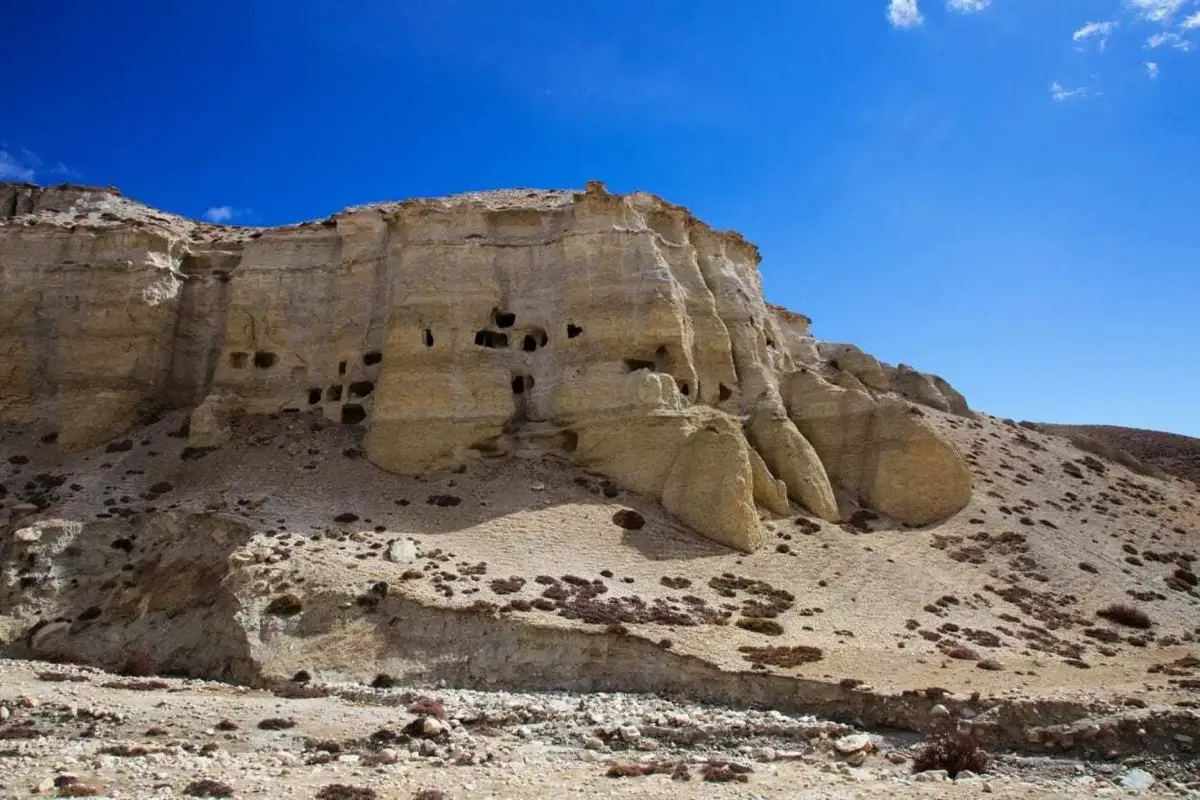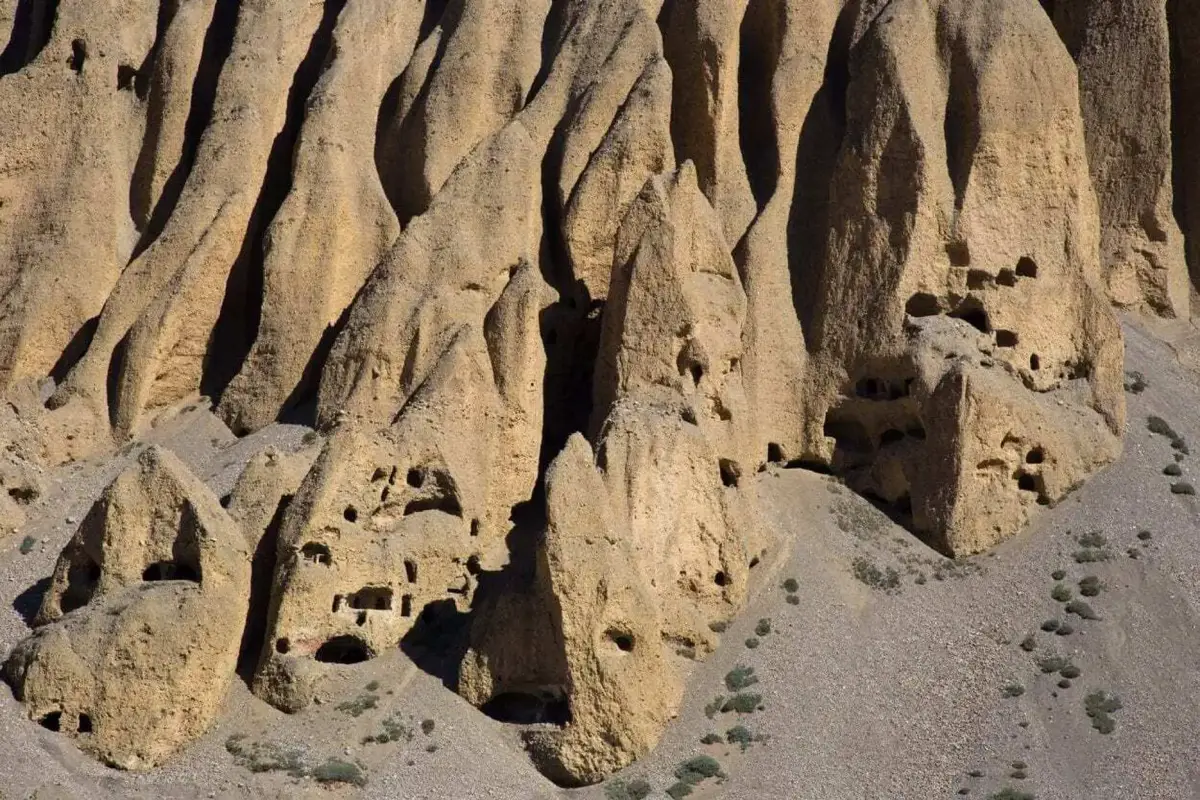The Sky Caves of Nepal, also known as the Mustang Caves, refers to 10,000 artificial caves constructed in the Mustang District of Nepal.
The region was formerly the Kingdom of Lo, with the capital located at Lo Manthang, until the kingdom was annexed by Nepal during the 18th century AD.
The caves were carved into a steep cliff face 155 feet above the valley basin, overlooking the present-day village of Samdzong near the Kali Gandaki River in Upper Mustang.

The caves have been divided into three distinct periods of occupation, with the earliest period dating from around 1000 BC when they were used for human burials.
Some later burials, dating from 3rd to the 8th centuries AD shows evidence that may be related to the Buddhist practice of sky burials (a funeral practice in which a human corpse is placed on a mountaintop to decompose while exposed to the elements or to be eaten by scavenging animals).

By the 12-15th century AD, the caves were used as meditation chambers, with archaeologists discovering several Buddhist paintings, sculptures, artefacts, and manuscripts containing writings from both the Bon religion and Buddhism.




